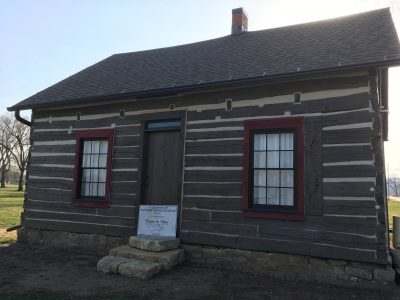Exhibit Design with Free Open Source Tools
Modern exhibit design relies heavily on digital tools. Unfortunately, the best known proprietary design apps entail costly subscriptions and lock users into workflows dictated by corporate software vendors. Free Open Source Software (FOSS) can give public historians and museum specialists more creative freedom in designing multimedia exhibits, eliminate recurring subscription fees, and build solidarity between museum educators and non-profit, community-driven software projects.
In 2021, we (Joshua Wachuta and Rachel Lewis) used exclusively Free Open Source Software to design interpretive exhibit panels, maps, and a touchscreen audio player for a small history exhibit at the newly restored St. Germain dit Gauthier / Coorough House in Prairie du Chien, Wisconsin. The tools we used covered a wide range of use-cases and skill-levels, ranging from simple GUI-based design apps to advanced programming tools for data visualization and app development.
Exhibit Setting and Historic Context

The St. Germain dit Gauthier / Coorough House dates to the early nineteenth century. It is the only surviving French-Canadian log house in the original “Main Village” of Prairie du Chien.
Located along the Upper Mississippi River, Prairie du Chien developed as a meeting ground in the fur trade, where Meskwaki, Sauk, Dakota, Ho-Chunk, Menominee, and other Indigenous nations met and negotiated with French-Canadian and British traders. Little of this multicultural history remains in the current built environment. In the 1860s, the arrival of the railroad led to a flurry of industrial redevelopment along the waterfront, which became known as the “Fourth Ward” after 1872. A century later in the 1960s, repeated flooding on the Mississippi River led to a full-scale relocation of the Fourth Ward community between 1978-1984. Most structures were either relocated or demolished, leaving only a handful of historic buildings behind in the floodplain.
The St. Germain House was spared from demolition owing to its unique log construction, but it sat idle for the next three decades. In 2018, the Prairie du Chien Historical Society acquired the house for preservation and oversaw its restoration, opening it for tours beginning in 2021.
Continue reading →